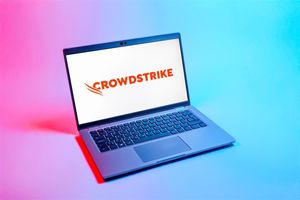Prudential’s latest Benefits & Beyond study finds that employers can boost productivity by addressing ‘silent struggling’ by employees who don’t use their mental health benefits.
Employers say the well-being of their employees is a priority — and many invest in employee assistance programs (EAPs) — yet many workers still don’t seek the support they need due to stigma and confidentiality concerns, according to a new installment of Prudential Financial Inc.’s 2025 Benefits & Beyond study, “New Workforce Expectations: Address mental health to help get employees needed support.”
As American workers navigate daily challenges such as living paycheck to paycheck and managing caregiving responsibilities, nearly two-thirds (63%) say they are worried about mental health for themselves or their families. Despite this concern, over half of employees with access to EAP have not tried to use services offered, which offer confidential and professional support for personal or work-related issues. This disconnect has significant implications for businesses, as employees struggling with mental health issues miss four times more work, costing the economy $47.6 billion annually in lost productivity according to Gallup.*
“The workplace is facing a mental health wake-up call — and an opportunity to cultivate a more supportive culture,” says Michael Estep, president, Prudential Group Insurance. “Employers must step up to provide needed support and foster a culture where using mental health programs are not only acceptable but encouraged. By providing accessible, stigma-free, and proactive support, businesses can empower employees, strengthen workforce resilience, and boost performance.”
The study lays out the current state of employee mental health and offers insights and opportunities to address the gap between availability of EAPs and their actual use. Key findings include:
- Untapped support opportunity: While 59% of employers report offering an EAP, more than half of employees (55%) have never tried to use their available program. Among those employees, 31% had a need for assistance but still did not use their EAP.
- Silent struggling: Employees are hesitant to use mental health resources or discuss mental health at work. The greatest barriers they face include fear of negative consequences (40%), concerns about confidentiality (38%) and worries about job security if they take a mental health leave (38%).
- Awareness gap: Employers believe they frequently communicate about EAPs, yet 22% of employees know little about their available benefits and 1 in 10 finds them too complex. This presents an opportunity for employers to increase awareness by reviewing the content and frequency of their communications.
- Stress management support: When employees are satisfied with their mental health resources, 79% feel well-supported in managing stress and their overall well-being. But when these programs fall short of expectations, their confidence drops to just 48%.
- Going beyond traditional: When it comes to the most helpful mental health support, employers should consider options beyond standard benefits offered during open enrollment. Both employers and employees agree the three most helpful and realistic offerings are mental health days, flexible work schedules, and stress management programs.
“Employers have the opportunity to proactively provide comprehensive benefits that holistically support their employees,” says Jess Gillespie, head of Product & Underwriting for Prudential Group Insurance. “By elevating mental health as a core workplace focus and encouraging engagement with available programs, employers can help reduce mental health stigma and cultivate a supportive culture, significantly enhancing both employee well-being and organizational productivity.”
Click here to view and download the study.
Visit prudential.com/employers/group-insurance for more information on Prudential Group Insurance’s portfolio of workplace benefits, absence management and risk mitigation solutions.
ABOUT THE RESEARCH
The research was conducted with 2,946 full-time employees and 750 employers in the U.S. via national online surveys in January and February 2025.
ABOUT PRUDENTIAL
Prudential Financial, Inc. (NYSE: PRU), a global financial services leader and premier active global investment manager with approximately $1.6 trillion in assets under management as of June 30, 2025, has operations in the United States, Asia, Europe, and Latin America. Prudential’s diverse and talented employees help make lives better and create financial opportunity for more people by expanding access to investing, insurance, and retirement security. Prudential’s iconic Rock symbol has stood for strength, stability, expertise, and innovation for 150 years. For more information, please visit news.prudential.com.
Prudential Group Insurance manufactures and distributes a full range of group life, long-term and short-term disability and corporate and trust-owned life insurance in the U.S. to institutional clients primarily for use within employee and membership benefit plans. The business also sells critical illness, accidental death and dismemberment and other ancillary coverages. In addition, the business provides plan administrative services in connection with its insurance coverages, and administrative services for employee paid and unpaid leave, including FMLA, ADA, and PFL.
Group Insurance coverages are issued by The Prudential Insurance Company of America, a Prudential Financial company, Newark, NJ.
*Agrawal, Sangeeta and Witters, Dan. “The Economic Cost of Poor Employee Mental Health.” Gallup Workplace. December 2022. https://www.gallup.com/workplace/404174/economic-cost-poor-employee-mental-health.aspx. Accessed June 2025.
1087693-00001-00
View source version on businesswire.com: https://www.businesswire.com/news/home/20250811342806/en/
Contacts
MEDIA
Marisa Amador
973-802-8969
marisa.amador@prudential.com






